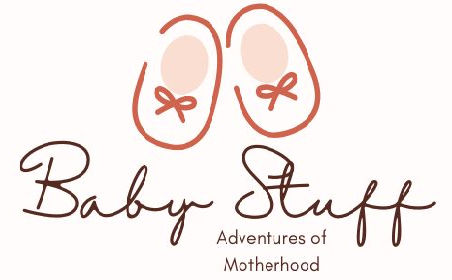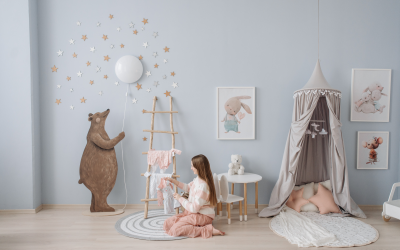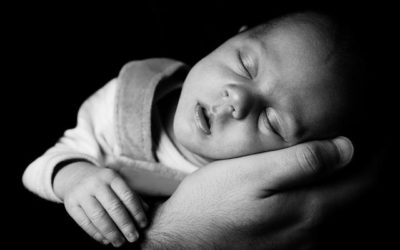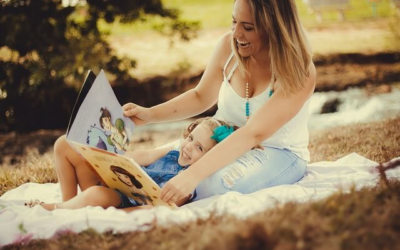Coronavirus variants, particularly those with infectious mutations, continue to spread, particularly in areas where community COVID-19 immunisation rates are low. To reduce the risk of coronavirus infection in children who are too young to be vaccinated (as well as adults who have not received coronavirus vaccines), it is critical to use proven COVID-19 precautions such as mask wear when in public, indoor settings.
“Indoor activities are riskier than outdoor activities,” Millstone writes, “but risk can be reduced through masking, distancing, hand washing, and improved ventilation.”
Children infected with the coronavirus can develop complications that necessitate hospitalisation, as well as spread the virus to others, so parents and caregivers should be aware of this.
In rare cases, children infected with the coronavirus can develop a serious lung infection and become critically ill with COVID-19, and deaths have occurred. As a result, both children and adults must take precautions to avoid infection.
COVID in Infants
It appears that coronavirus-infected women can pass the disease to their babies in very rare cases. Infants can become infected soon after birth as well. According to the Centers for Disease Control and Prevention (CDC), most newborns who test positive for the coronavirus have mild or no symptoms and recover, but serious cases have occurred. Pregnant women should take extra precautions to avoid the coronavirus, including speaking with their doctor about getting a COVID-19 vaccine. Although there is no evidence that the virus that causes COVID-19 is present in breast milk, it is critical to follow safety guidelines because COVID-19 can be spread during breastfeeding via respiratory droplets. Here is more information on COVID and breastfeeding.
How to Avoid COVID
Testing your child is the same as testing yourself. Babies are frequently tested with PCR in the same locations as adults, or they can be tested with a rapid antigen test (RAT).
If you use a RAT, make sure it is appropriate for the age group in question, as not all RATs can be used on children. If it is suitable, it will be stated on the package. Otherwise, talk to your pharmacist about the best test for your child’s age. It is also crucial to adhere to the directions for the specific test you have purchased, as they will differ.
Keep other people and pets as far away as possible from your home. They must wear a mask if they must be around other people. Children under the age of two should not wear masks, nor should anyone who is unable to remove a mask without assistance. For more information, consult the CDC’s mask guide.
Coughs and sneezes should be covered with a tissue, discarded, and hands washed immediately. Wash your hands for at least 20 seconds with soap and water, or use an alcohol-based hand sanitizerIf possible, stay in a separate bedroom and bathroom.
Dishes, glasses, cups, and eating utensils should be used separately and not shared.
Symptoms of COVID-19 in a newborn
COVID-19 symptoms are generally milder in children and babies than in adults, and some infected children may show no signs of illness at all.
The following are COVID-19 symptoms in children and adults:
• Coughing or chills • Breathing problems or shortness of breath • Aching muscles or joints • Throat discomfort • New taste or odour loss • Diarrhea • Headache • New exhaustion • Vomiting or nausea
Some COVID-19 and flu symptoms are similar, making it difficult to tell which is present.
“People with flu-like illnesses should avoid exposing others and get tested for COVID,” Milstone advises. Testing for the influenza virus is also important because available medicines can help reduce symptoms in those who have the virus. “Fever and cough are common COVID-19 signs in both adults and children; adults are more likely to experience shortness of breath.” Pneumonia can affect children with or without obvious symptoms. They may also suffer from a sore throat, extreme fatigue, or diarrhoea.
However, severe illness in children with COVID-19 is probable, and parents should be vigilant if their child is diagnosed with the disease or exhibits symptoms.
Risk factors for serious covid-10 in children
According to the study’s findings, some children may be at a higher risk of developing a severe case of COVID-19 that requires hospitalization: Health disparities can affect black and Latino children under the age of two, making them disparately vulnerable to severe illness. COVID-19 Complications
Children born prematurely
Those who are obese or have chronic lung disease
If you suspect your child has COVID-19, trust your instincts, especially if the child has a cough or fever. If you do not have a doctor, contact your pediatrician, family care practitioner, or urgent care clinic and carefully follow their isolation and testing instructions.
How to take care of covid-19 positive baby
If your baby has a confirmed or suspected case of COVID-19, you can take steps to put her at ease while also reducing the likelihood that other family members will contract the disease.
Quarantine
If your child tests positive for COVID-19, she should stay at home for at least five days and take precautions (such as avoiding older relatives who may become very ill from COVID-19) for ten days. The CDC defines “day one” as the first full day following contact with a COVID-19 infected person.
Risk factors for serious covid-10 in children
Since December 2019, the most pressing global issue has been Coronavirus disease 2019 (COVID-19). Although the clinical course of COVID-19 is known to be relatively mild in children than in adults, associated paediatric hospitalizations have increased since the emergence of contagious SARS-CoV-2 variants and the achievement of a high vaccination rate in adults. Given these global and domestic circumstances, we believe that risk stratification in children infected with COVID-19 is critical for making decisions about hospitalisation priority in children infected with SARS-CoV-2 and vaccination priority against COVID-19.
Multisystem Inflammatory Syndrome in Children (MIS-C)
Following a coronavirus infection, some children may develop a condition known as multisystem inflammatory syndrome in children, or MIS-C.
If your child has a fever of 100.4 degrees Fahrenheit or higher that lasts more than 24 hours and at least one of the following symptoms, contact your family doctor or pediatrician right away.
• Unexplained weakness or fatigue
• A red rash
• Abdominal (belly) pain
• Vomiting and diarrhea
• Swollen hands or feet
• Red eyes
Kids and families can reduce coronavirus risk together
Though COVID-19 appears to have less serious health consequences for children than for adults in most cases, it is critical to avoid infection among children. Here are some ways parents and guardians can assist:
Take all of your shots. As soon as possible, ensure that all family members receive COVID-19 vaccinations and boosters, as well as flu shots and other vaccinations.
Be aware of the signs and symptoms of COVID-19 and keep an eye out for serious disease in children.
Remember the COVID-19 safety precautions that can help everyone stay safe. Wearing a mask and physically separating yourself from others, especially if COVID-19 cases are prevalent in your area, can protect your family and others who are vulnerable to infection.
Hand hygiene should be practised. After using the restroom, sneezing, coughing, or blowing their nose, before eating (even snacks), and immediately after returning inside from outdoor play, children should wash their hands.
Milstone advises parents to teach their children to regularly wash their hands with soap and warm water for at least 20 seconds. “They can help keep track of time by singing the ABCs for about 20 seconds,” he says. If soap and water are unavailable, Milstone recommends using a hand sanitizer containing at least 60% alcohol.
Cough and sneeze gently. “Encourage everyone in the family to cough and sneeze into their elbows rather than their hands, and to wash their hands after each occurrence,” Milstone says. “After using tissues, throw them away,” he adds.
Keep your hands off your face. Children should be reminded by their parents to avoid touching their faces as much as possible. Milstone suggests that children carry a toy that will keep their hands busy, but that parents should wash those toys on a regular basis.
Maintain a clean environment. Wipe down toys and surfaces your child touches on a regular basis, especially when travelling or near a sick person. Clean your surfaces at home and keep cleaners in cabinets that are either too high or too low for your child.
Address anxiety and stress. Family discussions can help identify specific fears and clarify the facts. It is also beneficial for families to discuss a plan in case someone becomes ill or something else occurs that disrupts the normal routine.
“Children will look to you for guidance on how they should feel about COVID-19.” If you are calm and prepared, they will be as well.”
How common is coronavirus in babies and children?
There is still a lot we don’t know about how common coronavirus is in children as of summer 2020. However, we do know that babies and children of all ages, including newborns, can receive a COVID-19.
According to the same report, 0.6 to 9% of children with COVID-19 were hospitalised, based on data from 20 states and New York City. In a larger data set (43 states and New York City), 0 to 0.3 percent of known cases in children led to death.
What happens if a baby tests positive for HIV at birth?
The novel coronavirus is still relatively unknown, with scientists learning extra about it every week. According to data as of summer 2020, 2 to 5% of newborns test positive for COVID-19 inside of 24 to 96 hours of birth if mom is also positive. This is a small — but significant — group.
We have few case histories on babies born with COVID-19 (or other viruses).
In March 2020, physician in China Research Published examined the babies of 33 pregnant women who had COVID-19. Three newborns tested positive for COVID-19 out of all of these babies. (If you do the math, that works out to about 9%.) However, more data has been gathered since the time of this small study.)
The research detailed what occurred before and after the babies were born.
Because the moms had COVID-19 symptoms, including pneumonia, all three babies were delivered via caesarean (C-section). All three babies developed symptoms, and one of them required assistance breathing shortly after birth.
By the time this same babies were a week old, all three had tested negative (after testing positive at 2 days old and 3 days old). This is obviously a small group. As a result, we must exercise caution when drawing conclusions. However, based on this medical study, we know what might happen if a mother has COVID-19 at birth and her newborn baby tests positive for COVID-19 shortly after birth:
• baby may require NICU care;
• baby may be separated from their mother — either due to mom’s illness or baby’s illness;
• baby may receive a chest X-ray to check for pneumonia;
• baby may receive blood tests to check for other infections, blood clotting, and other issues;
• baby may be tested Trusted Origin for COVID-19 every two days (until baby is negative and has no symptoms)
Conclusion
Obesity, kidney disease, heart disease, severe lung diseases other than asthma, neurological diseases, and immunocompromised status were all associated with a high prevalence of severe COVID-19 in children. The risk of severe COVID-19 was higher in neonates and premature infants. Identifying the high-risk group for severe COVID-19 could help guide hospital admission and priority for SARS-CoV-2 vaccination.
Also interesting to read:
- Newborn dry lips: Sign, Causes and Treatments
- Importance of Baby Skin Care: A Complete Parents Guide
- How To Clean Baby Ears
- Tips To Get Better At Burping a Newborn That Won’t Burp
- Baby Born Deformed: What are the Main Types of Birth Defects?
- Dog Acting Out after Baby Arrival: A Complete Guide
- Why is My Newborn Wheezing?
- How to Help Your Newborn with Congestion?
- 10 Fun and Easy Daycare Activities for Infants
- From Crawling to Climbing: Day Care Baby Games







